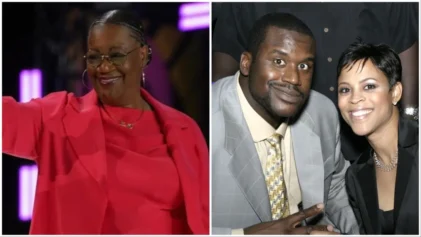“The entire area is historical, not only just the house, but indeed the man who built it” — Clifton Lewis, president of the L.B. Brown House Restoration Project.
Lawrence Bernard Brown was born into slavery in 1856 in Wacahoota, Florida. He would later become the richest Black man in a town just a few counties away.
In 1885, Brown moved to Bartow, Florida, and built a large number of homes. It is likely L.B. Brown built as many as 50 to 60 homes that he sold or rented, according to the website dedicated to his work.
Lewis says Brown’s father was a plantation minister and his mother was Native American. Brown was a talented man of many trades, and his most lucrative was building homes within the Black community in Bartow. But before Brown built other homes, he built his own in 1892, the two-story Frame Vernacular house that bears his name today under Lewis’ custodianship as the lovingly restored L.B. Brown House.
“There’s a notation in his records that when he bought the property in the early 1890s and paid $250,” said Lewis. “Now either that $250 included the materials or lumber — it just says house cost. Back then an acre of land was going for about $200 an acre.”
Lewis told Atlanta Black Star that he took over ownership of the home in the 1990s and has been committed to preserving the history inside those walls.
“We changed a few things on the exterior and added some things inside, but mostly, this is all original; most of the furniture is original.”

Access to reading and writing material was limited for newly freed enslaved people, but that did not stop Brown from becoming a businessman, determined to push past adversity.
“This is a sample of a contract from 1894,” said Lewis, pulling out century-plus-old document collected inside of the home. “There are two clauses to this contract, clause number one and clause number two. In clause number one it says “It is agreed that LB. Brown shall let Ben Knight have Lot #6 and one house has to be used for renting at $5 per month, so you get a sense of rental for a three-bedroom house.”
Brown and his wife Anna Belle, whom he married in 1909, went on to have seven children. Of those seven children, only one had a child.
“If Brown and his wife were still here they would probably still be having kids,” said Lewis, laughing. “That one grandchild passed away not too long ago but he didn’t have any kids; I was glad to take ownership of this home, which is now a museum, the schoolkids love coming to learn about L.B. Brown with me,” said Lewis.
Lewis says that a number of architects came out to evaluate the home, each discovering that Brown was not a professional architect.
“He sort of just made it work,” said Lewis.
This get-it-done mentality is what landed Brown the title as the richest man of color in Bartow. In 2016, the Smithsonian “National Museum of African American History and Culture” selected the story of L.B. Brown and the Historic L.B. Brown House Museum as one of its inaugural exhibits (located on floor L4).
The Bartow community comes together annually at the L.B. Brown Heritage Festival to honor the self-taught architect and master carpenter and to reenact the historic day, May 20, 1865, when the remaining peoples enslaved in Florida were freed.
L.B Brown died in 1941, his wife died several years before that. For more on their story check the L.B. Brown website.


